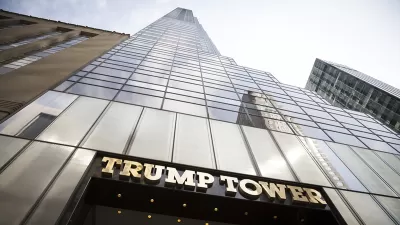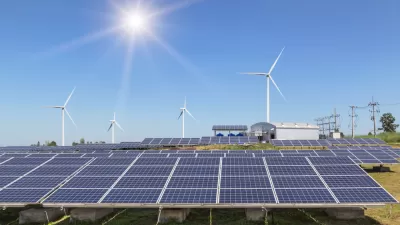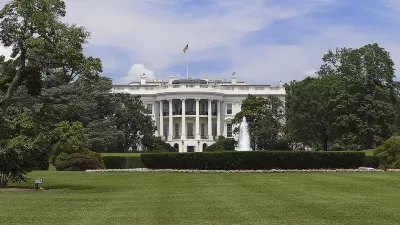Urbanists consider what the administration of President-elect, Donald Trump, will mean for cities.

With any more traditional Republican candidate who takes over after a Democratic administration, even a casual observer would expect there could be large-scale changes to immigration, birth control, environmental issues, gun control, and, probably, trade policy. After an election where a non-traditional Republican takes over after an election that also returned both houses of Congress to the Republican party, one would imagine that the changes would be that much more sweeping and swift. Republican politicians have an opportunity that hasn't existed in nearly a decade. In the Republican-dominated period between 2003 – 2007, a period that saw the invasion of Iraq and the partial-birth abortion act; it was also a time when the newly signed Patriot Act and newly created Department of Homeland Security became expanded and entrenched.
To narrow the scope of the question, Anthony Flint writes about the way the physical infrastructure of cities could be affected focusing on the "nuts and bolts." Trump's advisors have already proposed creating more than a trillion dollars of private infrastructure. The infrastructure would not all be new, it would also involve privatizing many miles of highways and bridges.
As far as allocating federal dollars for cities, Flint suggests that it’s unlikely, "The thinking among policymakers and elected officials has been that cities are on their own. That is certainly true in terms of federal funding; cities rely on state funding and “own source” revenue." That's not new policy though, Flint concedes, "The President’s FY 2017 Budget provides the U.S. Department of Housing and Urban Development with $48.9 billion in gross discretionary funding and $11.3 billion in new mandatory spending over 10 years, primarily for housing."
Issues of environmental and climate policy will be likely to affect cities. Trump has voiced his skepticism of climate change. Federal policy regarding climate change has myriad impacts, "Not only the role of alternative energy innovation in urban economies, but plans that cities around the country are making to prepare for the inevitable impacts of global warming: the burgeoning field of resilience and adaptation. Girding for sea-level rise is yet another task that is going to cost a lot of money, and require innovation in climate infrastructure finance."
Any discussion of cities, unfortunately, will involve a good deal of speculation, because many of the problems facing cities were ignored during the presidential campaign. "A national urban policy never got discussed in the campaign, despite the party conventions being held in two struggling post-industrial cities," Flint says.
FULL STORY: How to Start Thinking About What a Trump Presidency Means for Cities

Study: Maui’s Plan to Convert Vacation Rentals to Long-Term Housing Could Cause Nearly $1 Billion Economic Loss
The plan would reduce visitor accommodation by 25,% resulting in 1,900 jobs lost.

North Texas Transit Leaders Tout Benefits of TOD for Growing Region
At a summit focused on transit-oriented development, policymakers discussed how North Texas’ expanded light rail system can serve as a tool for economic growth.

Why Should We Subsidize Public Transportation?
Many public transit agencies face financial stress due to rising costs, declining fare revenue, and declining subsidies. Transit advocates must provide a strong business case for increasing public transit funding.

How to Make US Trains Faster
Changes to boarding platforms and a switch to electric trains could improve U.S. passenger rail service without the added cost of high-speed rail.

Columbia’s Revitalized ‘Loop’ Is a Hub for Local Entrepreneurs
A focus on small businesses is helping a commercial corridor in Columbia, Missouri thrive.

Invasive Insect Threatens Minnesota’s Ash Forests
The Emerald Ash Borer is a rapidly spreading invasive pest threatening Minnesota’s ash trees, and homeowners are encouraged to plant diverse replacement species, avoid moving ash firewood, and monitor for signs of infestation.
Urban Design for Planners 1: Software Tools
This six-course series explores essential urban design concepts using open source software and equips planners with the tools they need to participate fully in the urban design process.
Planning for Universal Design
Learn the tools for implementing Universal Design in planning regulations.
City of Santa Clarita
Ascent Environmental
Institute for Housing and Urban Development Studies (IHS)
City of Grandview
Harvard GSD Executive Education
Toledo-Lucas County Plan Commissions
Salt Lake City
NYU Wagner Graduate School of Public Service




























